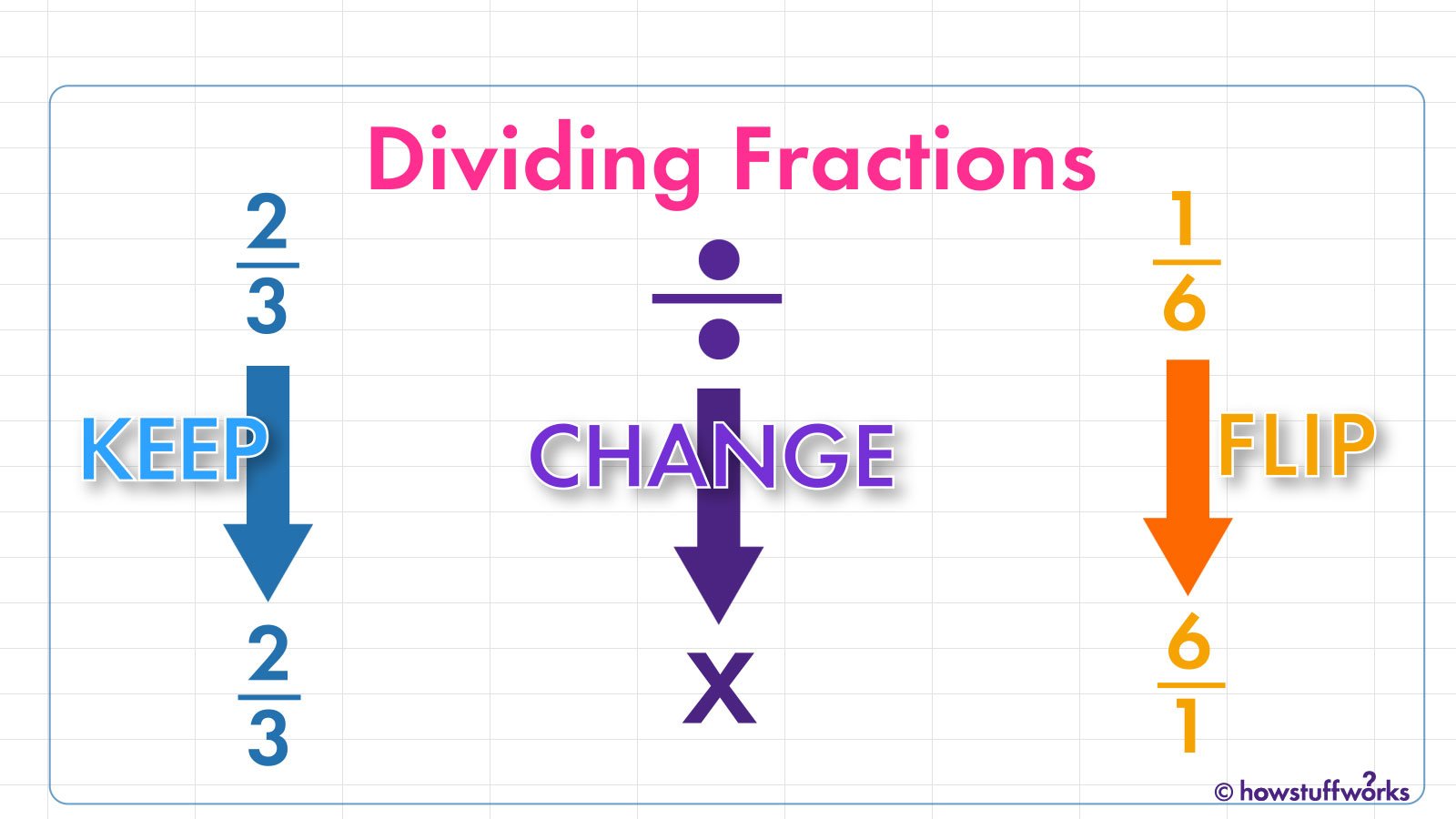Dividing fractions might seem daunting at first glance, but once you grasp the underlying concepts and follow a step-by-step process, it becomes a straightforward mathematical operation. This guide aims to demystify the process of dividing fractions, providing you with the knowledge and tools to tackle these problems with confidence. Whether you’re a student, educator, or simply refreshing your math skills, understanding how to divide fractions is a fundamental math skill that can be mastered with practice.
Understanding the Basics of Fractions
Before diving into the division of fractions, it’s crucial to understand what fractions represent and the terminology used. A fraction consists of two parts: a numerator and a denominator. The numerator, located above the fraction bar, indicates how many parts of a whole are being considered, while the denominator, below the fraction bar, represents the total number of equal parts that make up a whole. For example, in the fraction 3/4, 3 is the numerator, and 4 is the denominator, meaning we are considering 3 parts out of a total of 4 equal parts.
The Concept Behind Dividing Fractions
Dividing fractions might initially seem complex because it involves flipping and multiplication, unlike the straightforward division you might be used to with whole numbers. However, the core principle behind dividing fractions is simple: when you divide by a fraction, you are essentially asking how many times the divisor fits into the dividend. To simplify this process, we convert the division of fractions into multiplication by using the reciprocal of the divisor fraction.
Step-by-Step Guide to Dividing Fractions
- Identify the Dividend and Divisor: The first step in dividing fractions is to identify which fraction is the dividend (the fraction being divided) and which is the divisor (the fraction by which you are dividing).
- Find the Reciprocal of the Divisor: The reciprocal of a fraction is what you get when you flip the numerator and the denominator. For instance, the reciprocal of 2/3 is 3/2. This step is crucial because dividing by a fraction is equivalent to multiplying by its reciprocal.
- Multiply the Dividend by the Reciprocal: Once you have the reciprocal of the divisor, you multiply it by the dividend. This step converts the division problem into a multiplication problem, which is generally easier to solve.
- Simplify the Result: After multiplying, you may need to simplify the resulting fraction. Simplification involves reducing the fraction to its lowest terms by dividing both the numerator and the denominator by their greatest common divisor (GCD).
Example: Dividing Fractions in Action
To illustrate, let’s divide 3/4 by 2/5. Following our steps:
- Identify the Dividend and Divisor: Here, 3/4 is the dividend, and 2/5 is the divisor.
- Find the Reciprocal of the Divisor: The reciprocal of 2/5 is 5/2.
- Multiply the Dividend by the Reciprocal: Multiply 3/4 by 5/2, which gives (3×5)/(4×2) = 15/8.
- Simplify the Result: In this case, 15/8 cannot be simplified further, so that is our final answer.
Tips for Success
- Practice: Like any other mathematical skill, practice is key to becoming proficient at dividing fractions. Work through a variety of problems to build your confidence and understanding.
- Memorize Reciprocals: Familiarize yourself with the reciprocals of common fractions to speed up the process.
- Check Your Work: Always simplify your final answer and, if possible, check your work by performing the inverse operation (in this case, multiplying the result by the divisor) to see if you arrive back at the original dividend.
Common Mistakes to Avoid
- Forgetting to Find the Reciprocal: One of the most common mistakes is to forget to flip the divisor fraction before multiplying. Remember, division of fractions requires using the reciprocal of the divisor.
- Improper Simplification: Ensure you fully simplify your answer by finding the greatest common divisor (GCD) of the numerator and denominator. Leaving an answer in an unsimplified form can lead to mistakes in subsequent calculations.
- Mixing Up the Dividend and Divisor: Pay careful attention to which fraction is the dividend and which is the divisor, especially in complex problems that involve multiple operations.
Conclusion
Dividing fractions is an essential skill in mathematics that, with understanding and practice, can be mastered by anyone. By breaking down the process into simple, manageable steps and practicing regularly, you’ll find that what once seemed challenging can become second nature. Remember to start with a solid understanding of fractions, follow the steps for dividing fractions carefully, and practice regularly to hone your skills. With these strategies in hand, you’re well on your way to becoming proficient in dividing fractions, opening the door to a deeper understanding of mathematics and its applications in real-world scenarios.
FAQs on How to Divide Fractions
1. What is the easiest way to divide fractions?
The easiest way to divide fractions is by following a simple four-step process: Identify the dividend and divisor, find the reciprocal of the divisor, multiply the dividend by the reciprocal, and simplify the result if necessary. This method turns division into multiplication, making the process more straightforward.
2. Do I always have to simplify my answer when dividing fractions?
While you might get the correct answer without simplifying, it is considered good mathematical practice to always simplify your answer to its lowest terms. This makes your result more accessible to understand and use, especially in subsequent calculations.
3. Can I divide fractions using a calculator?
Yes, you can use a calculator to divide fractions. However, understanding how to do it manually is vital for developing a strong foundation in mathematics, which is essential for solving more complex problems that a calculator cannot easily handle.




















